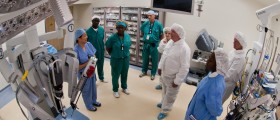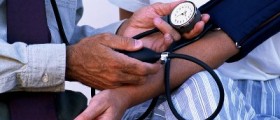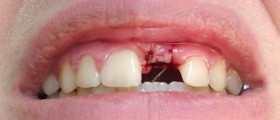Separation of the abdominal muscles can be significant problem and it most commonly affects pregnant women and obese people. Luckily the surgery has evolved over the years and one surgical procedure can bring the abdominal muscles together and make them firmer than they used to be.
Abdominoplasty
In this procedure the excess of the skin is removed and abdominal muscles are tightened. The aesthetic part of the surgery can be also achieved if a surgeon removes stretch marks together with excessive skin.
Women who have had many babies may have suffered from weight gain and weight loss and the continuous pressure onto the stomach muscles led to their separation and loss of strength and tonicity.
The appropriate candidates for this surgical procedure, among other people, are women who have managed to lose all the baby fat but their abdominal skin simply will not come back in its original place because the underlying muscles have lost their tonicity and become separated and obese people who have lost a lot of weight and who also suffer from insufficient tonicity of abdominal muscles. Still if a woman is planning another pregnancy it is best for her to wait until the end of that pregnancy since the results of surgery may be ruined with additional pregnancy. Getting pregnant leads to repeated separation of abdominal muscles.

The Surgical Procedure
After the incision line, which is horizontal and placed above the pubic area, is made, a surgeon lifts the skin and the underlying fat tissue, tightens the abdominal muscles and stitches them together, resects the extra skin and fat tissues and in the end closes the wound. In some cases after the extra skin and underlying fat tissue have been removed the surgeon has to create a new navel.
If the removed skin was covered with stretch marks even an aesthetic need of a woman will be satisfied since now her abdomen will not be covered with these embarrassing skin changes.
Risks of the Surgery
The risks of abdominoplasty include hemorrhage, infection of the incision line and reactions to general anesthetics. Patients who are suffering from additional medical conditions such as diabetes or who are heavy smokers may experience problems with postponed healing of the wound.
The most common combined surgery was TULUA with laser lipolysis 4 regions 123 cases, then mastopexy with implants 18 cases, mastopexy without implants 13 cases, gluteoplasty increase by lipotransference 9 cases, TULUA 7 cases, breast inclusion 4, upper blepharoplasty 3, gynecomastia 3, facelift 2, breast lipotransference 2, bichat 2, rhinoplasty 1, and vaginoplasty 1. The most common complications were:
- seroma after liposuction, 17 cases;
- partial dehiscence (no more than 1 cm), 11 cases;
- umbilical flap loss, seven cases;
- hypertrophic scar, three cases;
- dog-ear formation, two cases;
- infected wound, one case;
- umbilical granuloma, one case;
- seroma combined with dehiscence, one case.
After the Surgery
The hospitalization lasts maximum three days. A patient is forbidden to strain, bend and lift heavy objects as this may lead to split of the operated muscles and dehiscence of the wound. The bruising and swelling will eventually withdraw and the only thing that will be left is a scar. Luckily, the scar can be successfully hidden under almost every peace of clothing.
















Your thoughts on this
Loading...